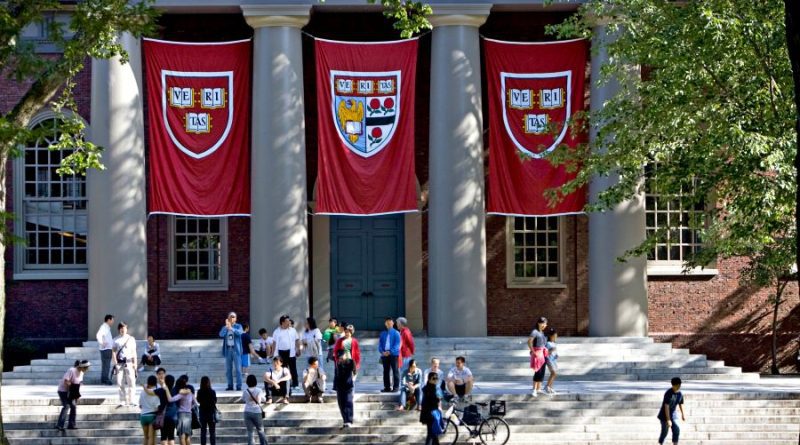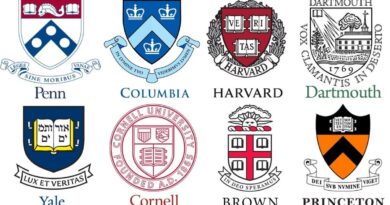How to Get Accepted at Most Selective U.S. Universities: Complete Guide
Securing admission to America’s most selective universities has become more competitive than ever. Although the overall acceptance rates in most of the colleges are increasing, meaning it is becoming easier to get into college, the admissions at the top colleges are becoming competitive. Read detailed analysis of admissions trends in USA HERE.
In 2024, elite institutions such as Harvard University, Stanford University, Massachusetts Institute of Technology (MIT), and Caltech admitted fewer than 5% of applicants. Others, including Pomona College, Swarthmore College, and Rice University, hover just under the 10% threshold. According to Common Data Set reports, NACAC admissions trends, and U.S. News data, the most selective schools look far beyond grades, prioritizing academic rigor, leadership, research aptitude, creativity, and strong personal narratives.
Below is an in-depth look at these universities, their acceptance rates, admission processes, and what truly matters when applying.
Universities with Ultra-Low Acceptance Rates (<5%)
Minerva University (Acceptance Rate ~1.0%)
Most people assume that Harvard, MIT, or Stanford must be the most competitive universities in America. But the reality may surprise you, the most selective university is Minerva. With 1 out of every 100 applicants accepted worldwide
The admissions process at Minerva is also very different. Instead of standardized test scores like SAT or ACT, applicants go through an online application that focuses heavily on scenario-based challenges. These exercises test how students think, solve problems, and apply knowledge in real situations. This approach shifts the emphasis from rote memorization to intellectual agility and creativity.
What really matters in a Minerva application is the student’s ability to demonstrate analytical reasoning, initiative, and global mindset. Successful applicants often showcase evidence of leading projects, launching startups, or contributing to social ventures. Strong English communication skills are equally important, as the program is deeply interactive and global in nature.
For students aiming to join Minerva, the best preparation is not endless test prep, but rather building a strong project portfolio. Focus on creativity, innovation, and meaningful engagement with real-world challenges. Minerva values applied learning, so the more you can show practical experience and original thinking, the stronger your application will be.
Admission Tip: Instead of chasing high test scores, invest your time in creating something impactful that highlights your problem-solving skills and leadership potential. This is what truly sets applicants apart at Minerva.
2. California Institute of Technology (Caltech) – 3.9%
After Minerva, the second toughest university to get into in the United States is not an Ivy League either, it is Caltech (California Institute of Technology). Known for its groundbreaking research and small, elite student body, Caltech has one of the lowest acceptance rates in the country. Its admissions focus is crystal clear: the school looks for students with exceptional ability in mathematics, physics, and scientific research.
The requirements for Caltech are some of the most rigorous among American universities. Applicants are expected to have completed challenging high school coursework, including calculus, physics, and chemistry. In addition, recommendation letters from math and science teachers play a significant role, as they provide insight into the applicant’s analytical skills and potential for research.
When it comes to what matters most, Caltech prioritizes students who have demonstrated STEM research experience. Whether it is through science fairs, Olympiads, or lab work, evidence of a passion for discovery is essential. While Caltech has adopted test-optional policies, high scores in standardized tests like the SAT or ACT can still provide a competitive edge. Above all, the university seeks students who display intellectual curiosity beyond the classroom, those who are eager to explore, question, and innovate.
For ambitious high school students, the best preparation strategy is to get involved in research early. Publishing a research paper, winning a competition, or participating in advanced lab projects can significantly improve admission chances. Caltech values originality and a genuine drive for scientific exploration, so students who showcase these traits stand out in the highly selective admissions process.
Tip: Don’t just excel in STEM classes, immerse yourself in independent research projects. A well-developed research paper or award in a recognized competition can greatly strengthen your application to Caltech.
Stanford University
At number three, with an acceptance rate of just 3.95%, stands Stanford University, one of the most prestigious and selective institutions in the world. Located in the heart of Silicon Valley, Stanford has built its reputation on innovation, leadership, and global impact. The university looks for students who not only excel academically but also bring unique perspectives and a proven track record of initiative.
Stanford’s admissions profile is broader than just academics. While strong grades and test scores are essential, the university places heavy emphasis on qualities that reflect leadership and creativity. Essays are a central part of the application, often serving as the differentiator among thousands of equally high-achieving students. Stanford wants to see authenticity, personal values, distinctive life experiences, and a clear sense of purpose.
Another critical factor is leadership and community engagement. Applicants who have taken meaningful leadership roles, whether in social impact projects, student organizations, or startups, stand out in the admissions pool. Additionally, Stanford is known for its athletic and artistic distinction. With one of the strongest athletic recruiting pipelines in the country, many successful applicants are athletes or artists who have demonstrated excellence at a national or international level.
For students aiming at Stanford, preparation should begin well in advance. The essays, particularly the personal statement and supplemental prompts, require deep reflection and clarity of voice. Starting the brainstorming process at least nine months before the deadline can make a big difference, allowing time for revisions and feedback.
Tip: Don’t treat essays as just another requirement. At Stanford, your personal story and values often weigh as much as your academic record. A well-crafted, genuine essay can be the key that sets you apart.
4. Harvard University – 4.0%
Coming next on the list is Harvard University, perhaps the most recognizable name in higher education worldwide. While its acceptance rate hovers around 3–4%, making it one of the toughest schools to enter, what sets Harvard apart is its holistic admissions approach. The university doesn’t just look for the smartest students, it seeks those who combine academic excellence with leadership, character, and a commitment to community service.
At the academic level, applicants need to demonstrate top GPAs with the most rigorous coursework available, such as AP or IB classes. Strong teacher recommendations are equally vital, especially when they highlight a student’s intellectual vitality, curiosity, and ability to contribute to classroom discussions. Harvard admissions officers are not only evaluating grades but also looking for genuine passion for learning and the potential to thrive in a collaborative environment.
Beyond academics, leadership and impact are defining factors. Successful applicants often showcase a record of meaningful contributions, whether it’s in student government, founding a nonprofit, leading an initiative, or excelling in a unique area that brings value to others. Harvard values students who have demonstrated the ability to make a difference in their school or community and who have the potential to lead on a larger scale.
One of Harvard’s most well-known philosophies in admissions is the idea of being “well-rounded with a spike.” This means that while applicants should show strength across academics, arts, and extracurriculars, they should also demonstrate exceptional ability in one particular area. That “spike” could be groundbreaking research, athletic achievement, artistic mastery, or leadership in a social cause.
Tip: Focus on developing breadth and depth. Show that you can excel across disciplines, but also highlight one passion or field where you are truly exceptional. This balance is exactly what Harvard seeks in its future leaders.
5. Massachusetts Institute of Technology (MIT) – 4.1%
At number five is the Massachusetts Institute of Technology (MIT), with an acceptance rate of just 4.1%. Known as one of the most recognizable names in STEM education, MIT has become the dream destination for brilliant minds around the world. What sets MIT apart is its focus on students with a “maker’s mindset”, those who don’t just learn theories but actively apply them to build, create, and solve real-world problems.
MIT’s admissions process looks beyond grades and test scores. The university seeks students who have demonstrated their technical abilities through hands-on projects. Whether it’s designing an app, building a robot, or winning a hackathon, MIT values creativity and innovation in action. But academic brilliance alone isn’t enough. The school also emphasizes a collaborative spirit, preferring team players who can contribute to group problem-solving rather than working in isolation.
Another crucial part of the application is the essays, where applicants are expected to show resilience, curiosity, and a passion for exploration. MIT wants to see how students approach challenges and how they grow from setbacks, as these qualities mirror the institute’s culture of continuous experimentation and innovation.
To stand out, applicants should strongly consider submitting the MIT Maker Portfolio, which allows them to showcase concrete evidence of their projects and inventions. This portfolio can often tip the scales in favor of students who have tangible proof of their creativity and problem-solving skills.
Tip: Don’t just study STEM, build something with it. From coding projects to engineering prototypes, show MIT that you are already living the “maker” culture they value so highly.
6. Columbia University – 4.1%
At number six is Columbia University, with an acceptance rate of about 4.1%. Located in New York City, Columbia combines world-class academics with a distinctive focus on intellectual curiosity and engagement with the humanities and social sciences. While strong grades and rigorous coursework are essential, what truly sets Columbia apart is its expectation that students will thrive in its renowned Core Curriculum, a broad foundation in liberal arts that emphasizes writing, debate, philosophy, and cultural exploration.
Admissions officers at Columbia look closely for evidence that applicants are not just strong students but also deep thinkers. Essays carry significant weight, as they are a window into a student’s intellectual depth, curiosity, and ability to connect ideas across disciplines. Beyond essays, successful applicants often show active engagement in writing, debate, or research, demonstrating their readiness to contribute to Columbia’s intellectually charged classroom environment.
For students applying to Columbia, the key is to balance academic rigor with a genuine passion for inquiry. The university wants students who ask big questions, challenge assumptions, and are eager to explore diverse perspectives.
Tip: Highlight your intellectual curiosity in essays. Show not only what you’ve achieved, but how you think, question, and engage with ideas beyond the classroom, that’s exactly what Columbia values.
7. Princeton University – 4.3%
At number seven is Princeton University, with an acceptance rate of about 4.3%. Known for its historic prestige and world-class faculty, Princeton emphasizes not only academic excellence but also a deep commitment to service and leadership. The university looks for students who will use their talents to make a meaningful difference in society, reflecting Princeton’s mission of producing servant-leaders.
A standout factor in Princeton admissions is the emphasis on writing ability. Essays are carefully read and evaluated, as the university wants students who can express complex ideas with clarity, depth, and originality. Beyond strong academics, Princeton expects applicants to demonstrate a record of community service or nonprofit involvement, showing that they value more than just personal achievement, they also seek to uplift others.
For STEM-focused applicants, research aptitude can make a strong impression. Participation in advanced research projects, lab work, or independent studies signals the intellectual curiosity and discipline Princeton values.
Tip: When applying to Princeton, balance academic rigor with service-driven activities. Show that you’re not only an excellent student but also someone committed to contributing positively to your community and the wider world.
Other Highly Selective Schools (5–10%)
Yale University (5.3%) – Yale seeks students who pair academic excellence with creativity, especially in the arts and humanities. Admissions officers pay close attention to essays, which should demonstrate originality, depth of thought, and a strong personal voice. To stand out, applicants should highlight intellectual curiosity and creative pursuits, writing, music, art, or research, that reflect Yale’s tradition of producing versatile leaders.
Brown University (5.5%) – Brown is ideal for self-directed learners who thrive in freedom and independence. The university’s open curriculum allows students to design their own path, so admissions officers want to see initiative and clarity of academic vision. Applicants should highlight moments where they took ownership of their learning, pursued independent projects, or carved out unique experiences that showcase self-motivation.
University of Pennsylvania (5.8%) – Penn, especially through Wharton, has a strong preference for students with business and entrepreneurial skills. Applicants should show evidence of leadership in startups, internships, or finance-related projects. Beyond business, Penn values interdisciplinary interests, so connecting your entrepreneurial mindset to broader academic or social impact themes strengthens your application.
Duke University (5.8%) – Duke balances academics with a strong culture of athletics and research. Leadership is a recurring theme, whether in sports, labs, or community organizations. Applicants should highlight resilience, team spirit, and initiative. Essays that show both academic passion and extracurricular impact align well with Duke’s balanced admissions priorities.
Dartmouth College (6.1%) – Dartmouth emphasizes a tight-knit, community-focused environment. Admissions officers look for applicants who will thrive in collaboration and contribute positively to campus life. Strong essays should demonstrate empathy, teamwork, and meaningful service. Highlighting involvement in close communities, clubs, local projects, or family leadership, can strengthen your case.
University of Chicago (6.4%) – UChicago is famous for its uncommon essay prompts, which test creativity, wit, and critical thinking. Strong academics are essential, but the essays are often the deciding factor. Applicants should showcase intellectual playfulness, curiosity, and originality. Bold, thoughtful, and risk-taking responses resonate most with Chicago’s admissions philosophy.
Pomona, Swarthmore, Amherst, Williams (6–8%) – These top liberal arts colleges emphasize academic rigor paired with intellectual passion. With smaller, discussion-based classrooms, they value students who engage deeply with ideas. Strong essays, research, and independent intellectual pursuits matter most. Applicants should highlight curiosity, collaboration, and a love of learning across disciplines.
Johns Hopkins (7.5%) – Johns Hopkins is a leader in STEM and biomedical research, so students with lab experience, publications, or medical-related projects are especially attractive. Admissions officers value students who have shown dedication to discovery, whether through science fairs, internships, or independent research. Applicants should highlight a passion for solving real-world problems through science.
Naval Academy (8.4%) – Admission requires a congressional nomination, physical fitness tests, and demonstrated leadership. Beyond academics, commitment to service is non-negotiable. Applicants should highlight discipline, resilience, and leadership roles in athletics, ROTC, or community service. A strong narrative of dedication to country and teamwork is crucial.
Rice University (9.4%) – Rice is known for its strong programs in STEM and music, and a collaborative campus culture. The university looks for students with academic excellence who also thrive in teamwork. Applicants should emphasize leadership that fosters collaboration, and showcase artistic or technical achievements that reflect Rice’s interdisciplinary strengths.
Harvey Mudd (9.9%) – Harvey Mudd emphasizes STEM rigor, expecting applicants to demonstrate mastery in advanced math and science. Strong performance in calculus, physics, and related fields is essential. Beyond coursework, evidence of engineering projects, coding, or STEM competitions can give applicants an edge. Admissions officers value applicants who can combine technical skill with creative problem-solving.
Final Guidance: How to Tailor Your Application for the Toughest Universities
The most selective universities in the U.S. may have different cultures, academic focuses, and admissions philosophies, but one thing is constant: there is no single formula for success. What works for MIT will not work for Yale; what impresses Harvard may not resonate with the University of Chicago. That’s why the smartest approach is to understand what each school values most and then tailor your application to highlight those qualities.
For STEM-heavy institutions like MIT, Caltech, Harvey Mudd, and Johns Hopkins, tangible evidence of technical projects, research, and innovation is key. Here, your portfolio of apps, robotics, science fairs, or published research will matter more than polished rhetoric alone. Essays should emphasize problem-solving, curiosity, and resilience in the face of challenges.
For Ivy League schools such as Harvard, Princeton, Yale, Columbia, Brown, and Dartmouth, the admissions process is deeply holistic. Yes, they expect top academic performance, but they are equally concerned with leadership, service, creativity, and intellectual depth. Your essays are crucial for showing personal values, authentic voice, and unique perspectives. Activities that reflect community service, leadership in nonprofits, or artistic excellence can often tip the balance.
At innovation-driven universities like Stanford and Penn (Wharton in particular), leadership, entrepreneurship, and the ability to create impact stand out. Applications here benefit from stories of startups, community initiatives, or creative ventures. The essay should not only reflect your achievements but also your vision of how you plan to create meaningful change.
For liberal arts colleges like Pomona, Swarthmore, Amherst, and Williams, and essay-centric schools like the University of Chicago, intellectual curiosity and passion for learning take center stage. The best applications highlight genuine love for ideas, original thought, and creativity in writing. Essays here aren’t just supplements, they are the centerpiece.
For unique models such as Minerva or the Naval Academy, alignment with the mission is essential. Minerva prioritizes global critical thinkers and problem-solvers, so a portfolio of real-world projects will shine. The Naval Academy requires not only academic ability but also leadership, discipline, and a demonstrated commitment to service.
What Admissions Officers Highlight
- Essays: Differentiator at Stanford, Chicago, Yale.
- Leadership: Crucial at Harvard, Princeton, UPenn, Duke.
- STEM Aptitude: Caltech, MIT, Harvey Mudd weigh research and projects heavily.
- Arts & Creativity: Juilliard, Curtis, Yale require portfolios/auditions.
- Service & Character: Princeton, Naval Academy, Dartmouth emphasize values and community.
How to Plan Strategically
- Start Early – Begin essays, projects, and recommendations at least 9–12 months before deadlines.
- Research Each School’s Culture – Read about their mission, curriculum, and standout programs. Align your application with their values.
- Build Depth, Not Just Breadth – Show that you’re well-rounded but also have a clear “spike”, an area where you are truly exceptional.
- Use Essays as the Differentiator – Academic excellence is assumed; essays reveal your voice, values, and fit for the school.
- Show Impact – Whether through leadership, service, research, or entrepreneurship, highlight how your work has made a difference.
- Seek Authenticity – Don’t try to fit a template. Selective schools can detect rehearsed or generic applications. Your authentic journey is your biggest strength.
The Big Picture
Admissions to these universities is never just about getting perfect grades or high-test scores. It is about showing who you are, what you care about, and how you will use your talents to make an impact. Each application should be tailored, STEM innovation for MIT, service and writing depth for Princeton, creativity for UChicago, or leadership and vision for Stanford.
Bottom Line: The toughest universities don’t want the same kind of student, they want the best version of you. Identify your strengths, tailor them to the values of each school, and let your authentic story shine.
Final Thoughts
Admission to these universities requires far more than grades. As acceptance rates drop below 10%, successful applicants distinguish themselves through academic rigor, essays that reveal authentic voice, and long-term commitment to leadership or intellectual passions. Students should start preparing years in advance, focusing on depth over breadth in their activities, and aligning their strengths with each institution’s mission.



